Search
Did you mean: Copan?
Search Results
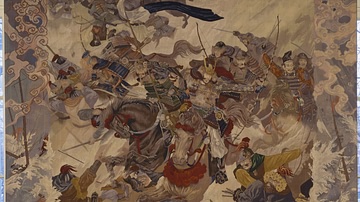
Image
The Mongol Invasion of Japan
"The Mongol Invasion" is a Japanese silk tapestry by Kawashima Jimbei II (Japanese, 1853 - 1910 CE), based on an oil painting by Morizumo Yugyo (1854 - 1927 CE). The painting depicts the Mongol Empire's failed invasions of Japan in in 1274...
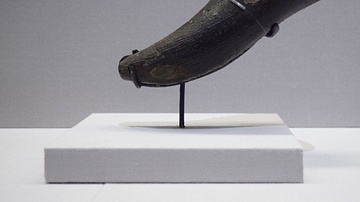
Image
Horn-shaped Vessel from Japan
This ancient horn-shaped vessle was excavated at Shishuzuka Tumulus, which is located in Mihamacho, Fukui prefecture, Japan. It dates from the 6th century CE, during the Kofun period. (Tokyo National Museum)
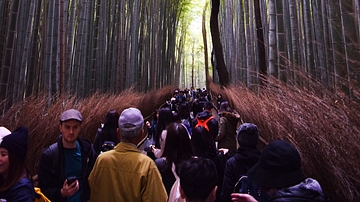
Image
Arashiyama Bamboo Forest in Japan
The Arashiyama Bamboo Forest or "Sacred Grove" is located in Arashiyama, Japan. Arashiyama and the adjoining Sagano area first became popular during the Heian period when courtiers and the imperial family sought privacy and seclusion away...

Image
Fushimi Inari Shrine in Kyoto, Japan
The Fushimi Inari Shrine near Kyoto (Heiankyo), Japan is the largest and most important shrine dedicated to Inari, the Shinto god of rice and prosperity. The shrine was founded in 711 CE by the Hata clan and moved from its original location...

Image
Doban Clay Tablet from Japan
This doban or clay tablet is from the Fukuda Shell Mound in what is present-day Ibaraki prefecture, Japan. It dates from the Jomon period, between 1000-400 BCE. Important cultural property. (Tokyo National Museum)
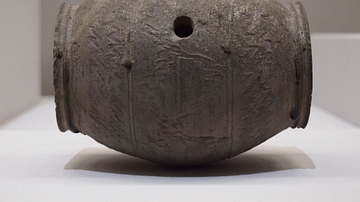
Image
Keg-Shaped Pot from Japan
This keg-shaped pot with an opening for pouring was excavated at Enomachi, in Fukuoka prefecture, Japan. It dates from the 6th century CE or during the Kofun period. Note the curious "wave-like" designs, which might function as decor. (Tokyo...

Image
Sutra Case from Heian Period Japan
This sutra case was excavated at Hatogamine in Kyoto, Japan. It is made of gilt bronze and dates to the 1116 CE, which was during the Heian period in Japanese history. (Tokyo National Museum)

Article
Ancient Korean & Japanese Relations
Ancient East Asia was dominated by the three states known today as China, Japan, and Korea. These kingdoms traded raw materials and high-quality manufactured goods, exchanged cultural ideas and practices, and fought each other in equal measure...

Image
A Composite Imaginary View of Japan
A large silk embroidered wall hanging, worked in long and short silk stitch, with a composite imaginary view of Japan, including shrines, bridges, lakes, forests and flowers, Mount Fuji rising in the distance, within a brocade border. Khalili...
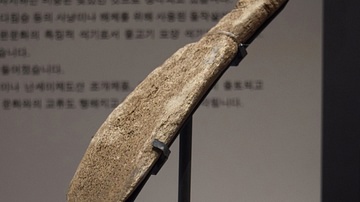
Image
Whale Bone Spade from Ancient Japan
This whale bone spade comes from Japan and dates from the Jomon period, between the 2nd-1st century BCE. (Tokyo National Museum)